Advanced Shopify Import: Stock Increment Strategy
![]()
Imagine you need to update your Shopify product catalog. You can upload the update file using the default tools but what if it is necessary to apply some specific changes to product quantities? While Shopify’s built-in options might not provide extensive flexibility, the Firebear Import & Export Tool empowers you with control over this crucial aspect.
Would you prefer a complete replacement of existing stock information with new values, or is merging the new data with the old more aligned with your strategy? In this in-depth guide, we unravel the intricacies of implementing various stock increment strategies for importing products into Shopify. You’ll learn how to import products by replacing existing stock data or incrementing the current stock count by the specified quantity.
This comprehensive exploration ensures you gain a clear understanding of how to update your inventory effectively, tailored to your specific needs. And there’s more valuable insight awaiting you in our Shopify Cookbook.

Table of contents
Default Shopify Import & Stock Increment Strategy
Shopify does provide the ability to manage and update inventory levels for products via different increment strategies. However, the basic process involves updating product information through CSV files or using the Shopify admin interface.
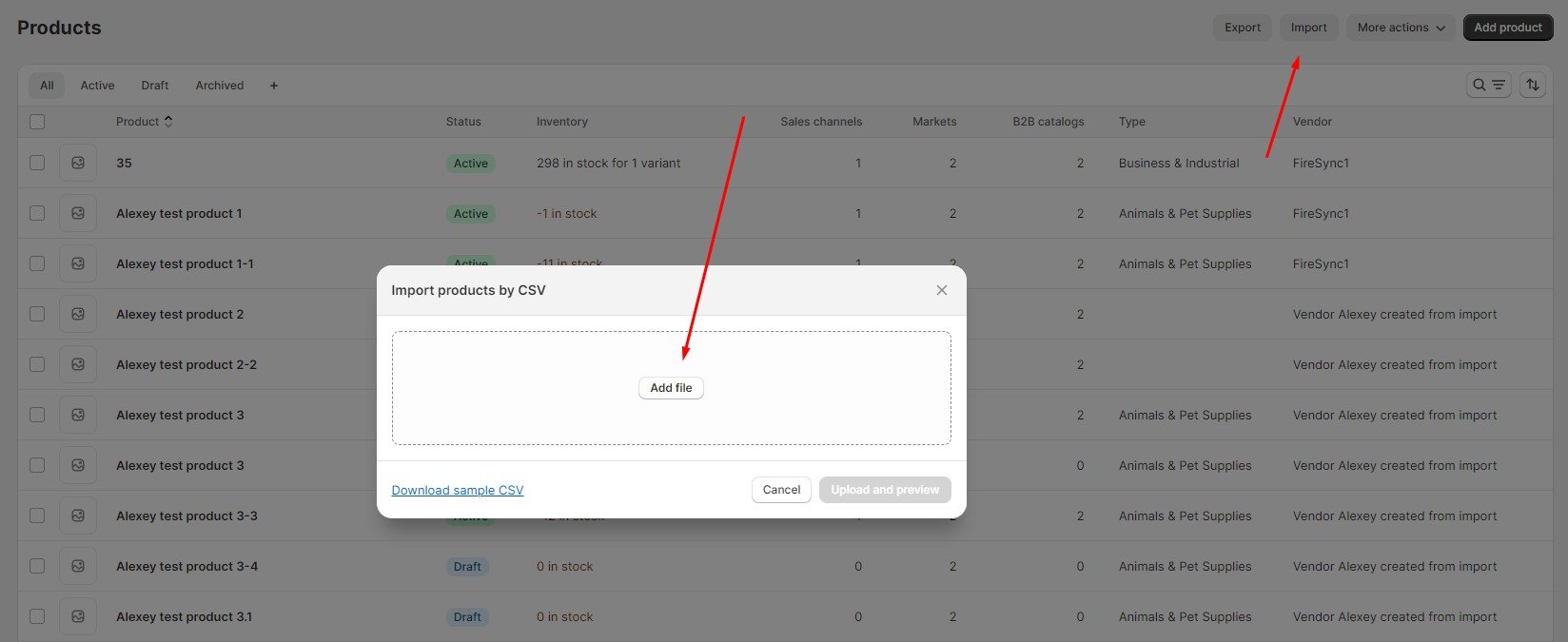
When importing products via CSV, you typically include columns for various product details, including inventory-related information such as “Variant Inventory Qty” and “Variant Inventory Tracker.” You can set the “Variant Inventory Tracker” to “shopify” and specify the quantity in the “Variant Inventory Qty” column. This action replaces the existing quantity stock level with the quantity specified in your update file.
However, the specific option to set a stock increment strategy during import is not a built-in feature. But you can get it with the Firebear Import & Export Tool. Stock increment strategies, such as how stock levels are adjusted when new inventory is added, may easily become a part of your overall inventory management strategy. Let’s see.
Shopify Product Import: Stock Increment Strategy
The Firebear Import & Export Tool takes the default data transfer capabilities of Shopify and supercharges them with an array of additional features with the Stock Increment Strategy toggle among them. This enhancement is available in the Advanced Settings section of each import profile:
- When it’s turned off: You’re essentially telling the system to replace the existing product stock with the quantity specified in your import file. For example, if your store currently has 100 items in stock, and your import file specifies a quantity of 50, post-import, your store’s stock level will be 50.
- When it’s turned on: You’re signaling that you want to boost your existing product stock by the amount indicated in your file. So, if your actual product quantity is 100, and your update specifies an increase of 50, your new stock level will be 150 after the import.
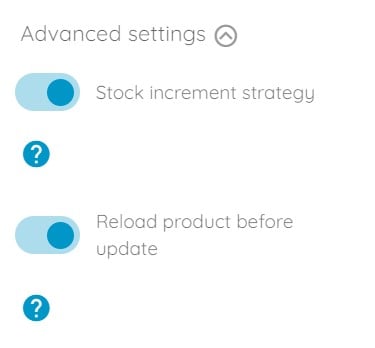
Note that after activating the Stock Increment Strategy toggle, the Reload Product Before Update option displays:
- When it’s disabled: Any changes to your product quantity happen immediately, following the selected stock increment strategy.
- When it’s enabled: The system first reloads your product data to get the most up-to-date quantity information and then adds the quantity specified in your import file.
Wondering about the usefulness of the reload feature? Consider a situation: a customer places an order on your storefront just as you’re in the process of importing updates. Enabling this option ensures that the quantity update is accurately applied after the order is made. The Reload Product Before Update feature takes charge by reloading your product to retrieve its actual quantity. Subsequently, the import file’s quantity seamlessly integrates, ensuring a smooth and precise operation!
How to Import Products to Shopify With Different Stock Increment Strategies
Let’s dive into importing products into Shopify using various stock increment strategies. The process is divided into a few intuitive steps:
Step 1: Access the Import Profile
First of all, you need to create a new import profile. Go to Apps -> Firebear Import & Export Tool -> Import and click the “New Profile.”
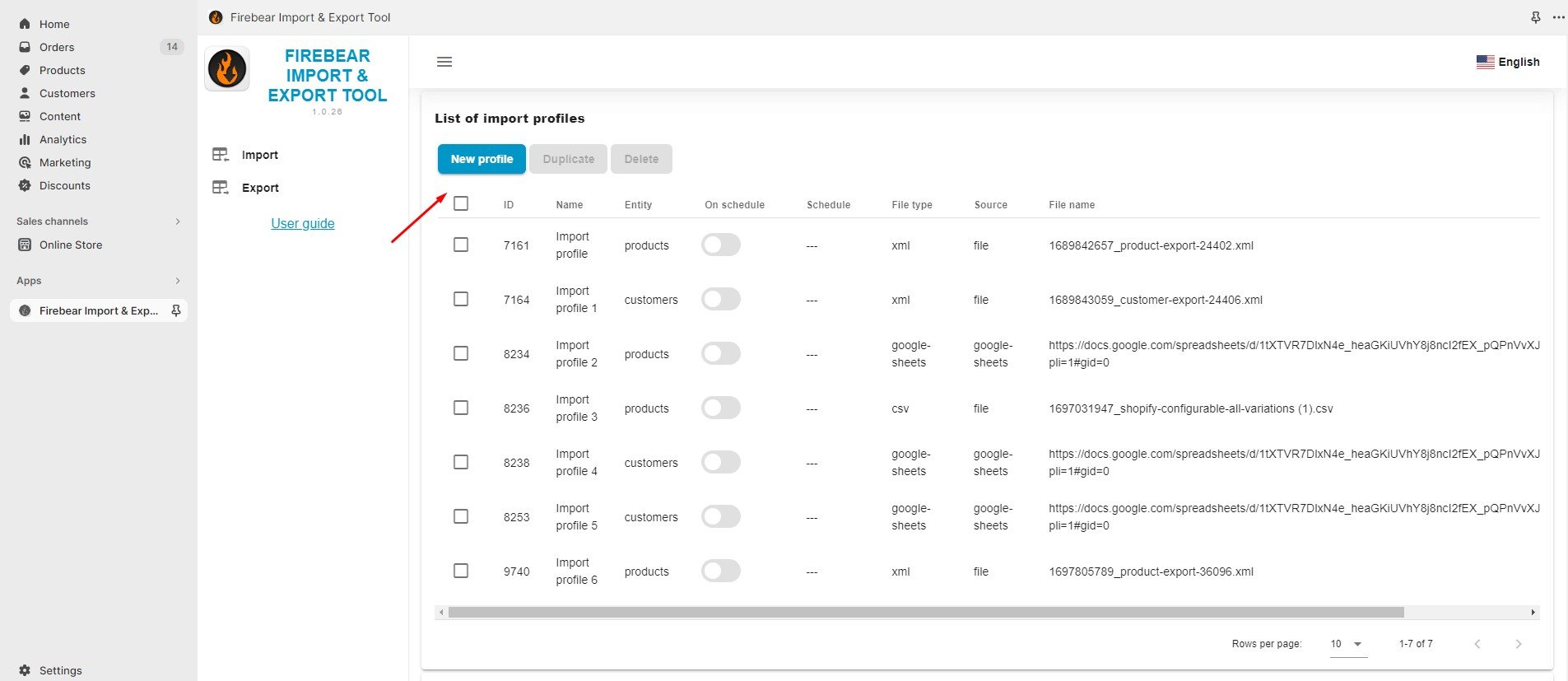
Step 2: Select File
When on the “Select File” screen, follow these steps to enable a stock increment strategy that suits your needs:
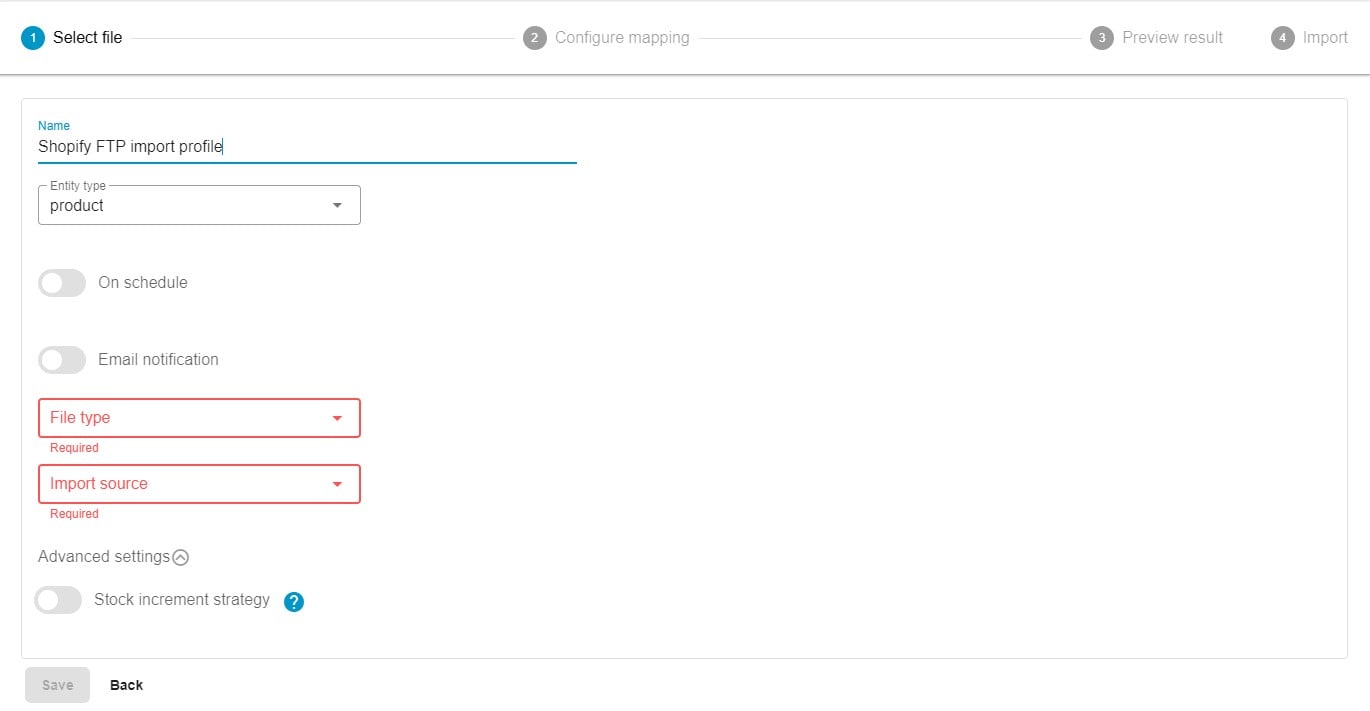
- Name your import profile.
- Choose the entity to import – products (you can also choose customers).
- Enable the On Schedule toggle to create a schedule of updates for Shopify imports if necessary.
- Enable notifications for Shopify import results if you want to stay informed on how your imports run.
- Select your file format. Our app supports XLSX, XML, and CSV formats and direct imports from Google Sheets spreadsheets.
- Now, choose your import source: FTP, URL, Google Drive, or manual file uploads.
- Before going any further, finetune advanced settings: choose whether you want to turn on the Stock Increment Strategy. If it is enabled, decide whether you want to activate the Reload Product Before Update option.

Step 3: Configure Mapping
On the mapping screen, you have the option to designate which columns from your import file should align with the product properties in your Shopify store. In case your update includes column names that don’t adhere to Shopify’s requirements, you can easily substitute them with suitable ones in this section.
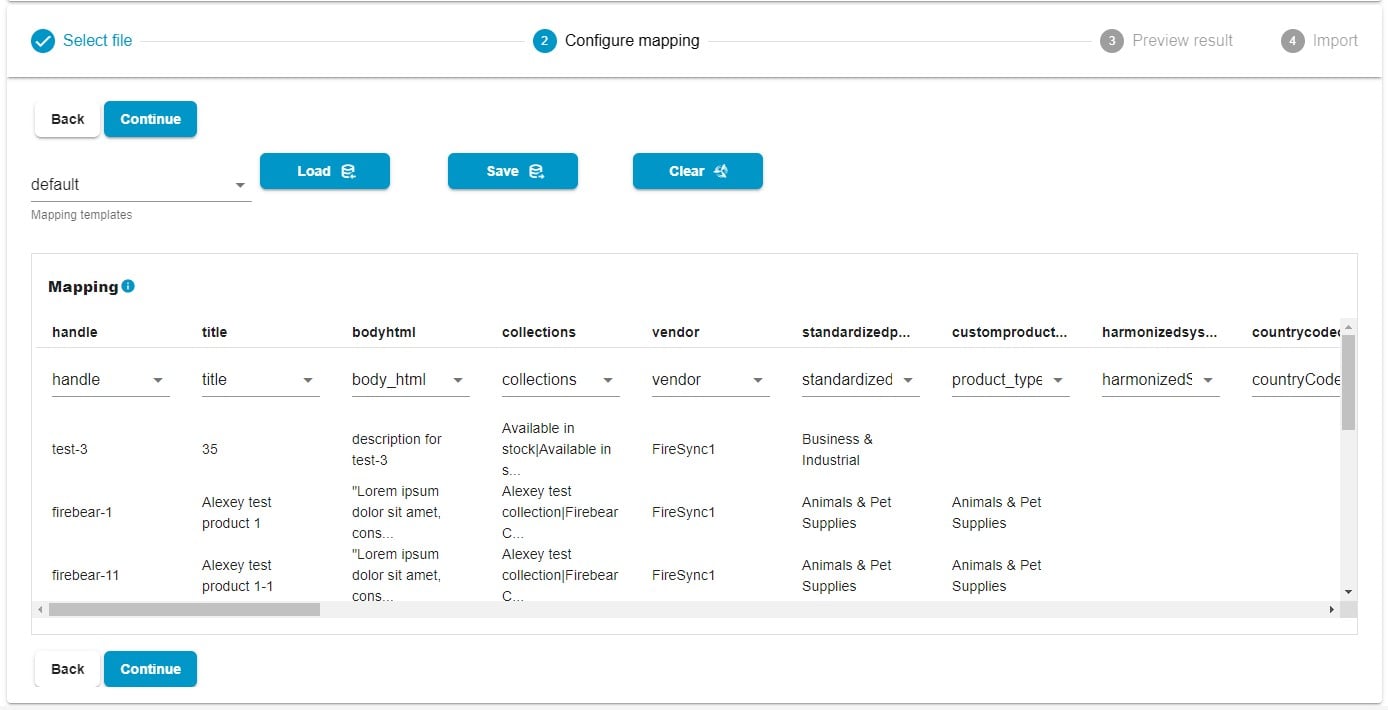
Click “Continue” to proceed to the next section.
Step 4: Preview Results
The Import & Export Tool offers a preview of the imported data. This step allows you to catch mistakes that could result in failed imports.
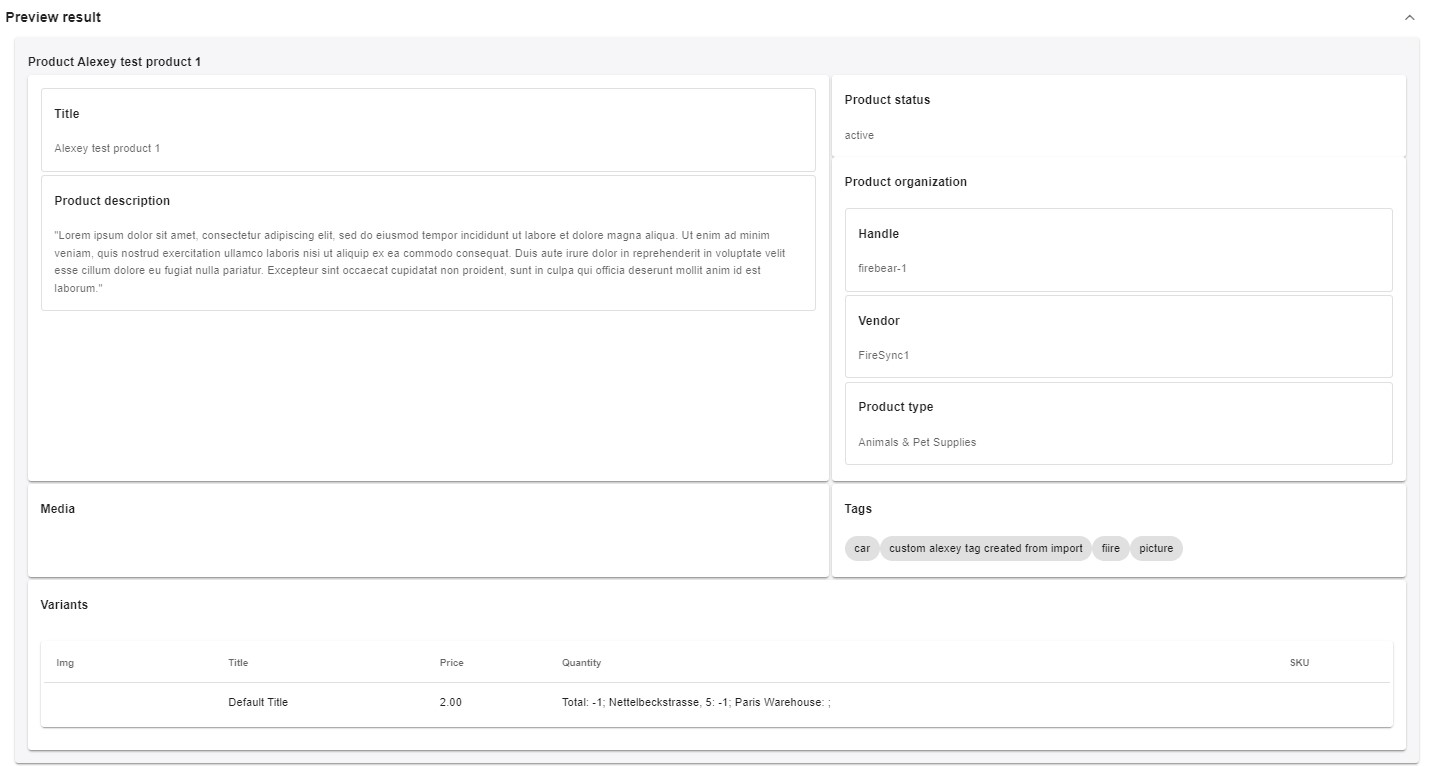
Step 5: Import
Click the “Save” button to save your Shopify import profile. It will be executed automatically if you’ve created a schedule. Alternatively, you can click the “Import” button to launch the transfer.

For more detailed information on enhancing your Shopify import, refer to our “Improved Import & Export Tool Manual.”
Other Features
Shopify merchants can significantly enhance their data management capabilities through the robust Firebear Import & Export Tool. This app goes beyond the standard Shopify toolkit, introducing an array of features for streamlined data management, including:
- Comprehensive Product Handling: Effortlessly manage product data and custom properties, ensuring your catalog remains up-to-date.
- Customer Data Management: Simplify the import and export of customer details to streamline customer relationship management.
- Efficient Order Export: Extract valuable insights from transactions and sales analytics through streamlined order data export.
- Accurate Data Mapping: Define precise data relationships for seamless integration into your Shopify store.
- Flexible Scheduling Options: Establish custom import and export schedules, automating data updates based on your business requirements.
- File Format Versatility: Seamlessly work with CSV, XLSX, and XLSX files for smooth data transitions.
- Google Sheets Integration: Facilitate collaborative data management by seamlessly transferring data between Shopify and Google Sheets.
- Direct File Uploads: Simplify the import and export of data files, promoting efficient data management.
- Secure FTP/FTPS Uploads: Ensure data transfer security with robust support for FTP/SFTP protocols.
- Google Drive Integration: Streamline data file uploads by seamlessly integrating with Google Drive.
The Firebear Import & Export Tool provides Shopify business owners with a comprehensive solution for data management. With support for multiple file formats, advanced scheduling, flexible mapping, and seamless integration with Google Sheets and Google Drive, this application empowers users to optimize their data processing while maintaining accuracy and relevance. For further information about this product, please visit:

